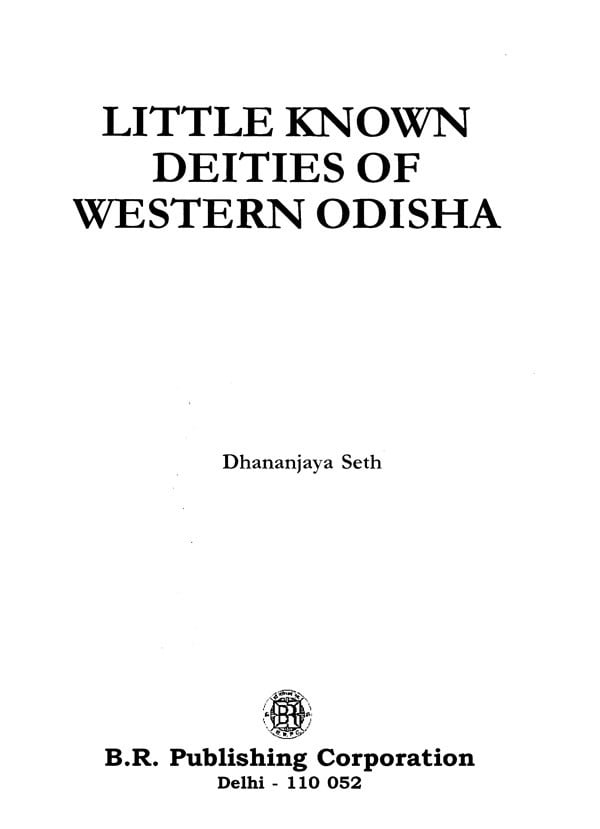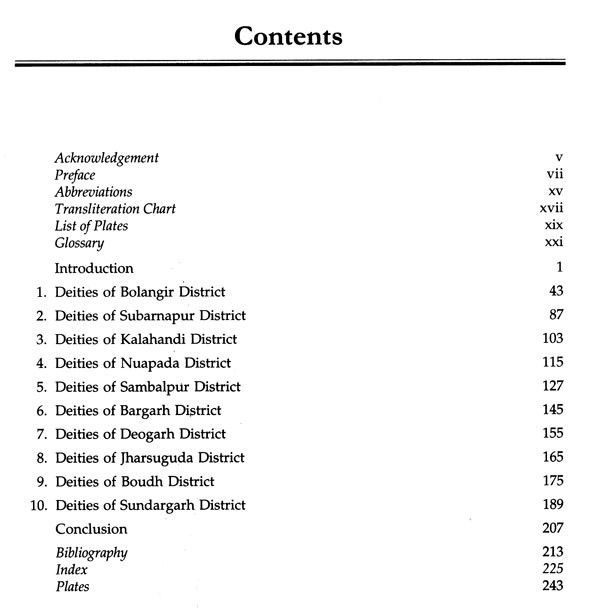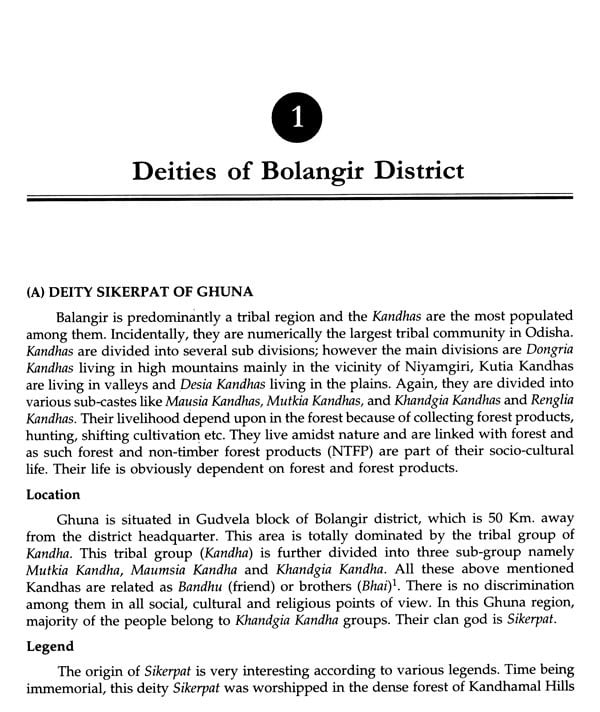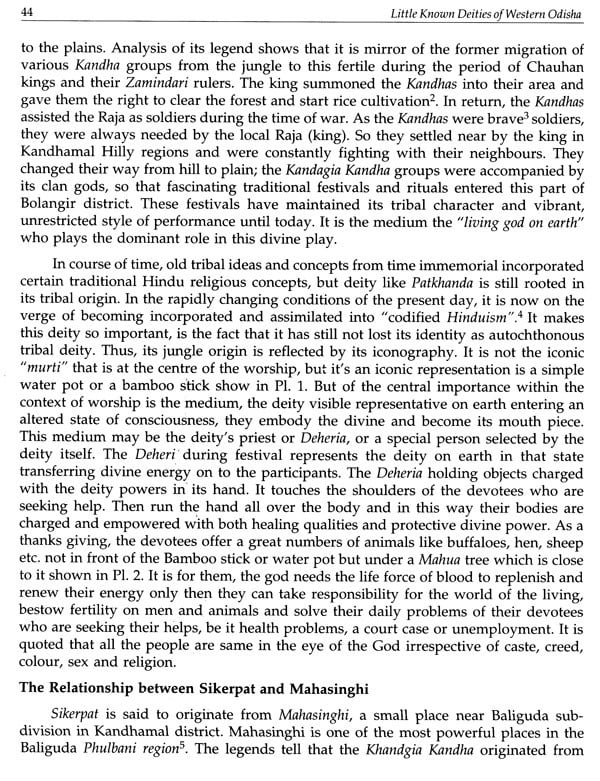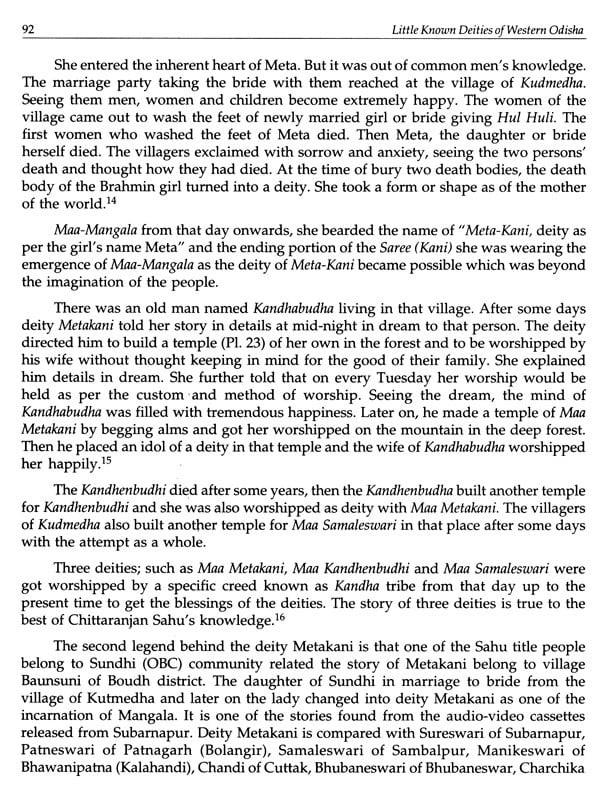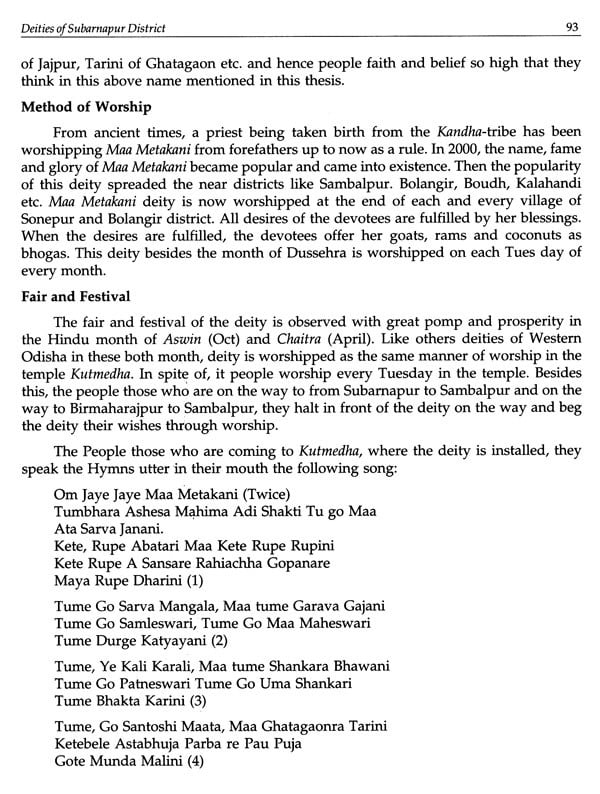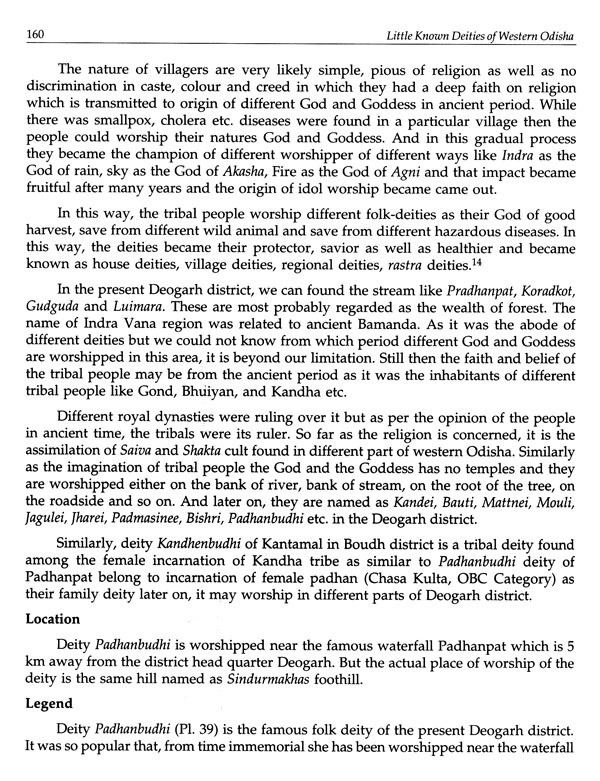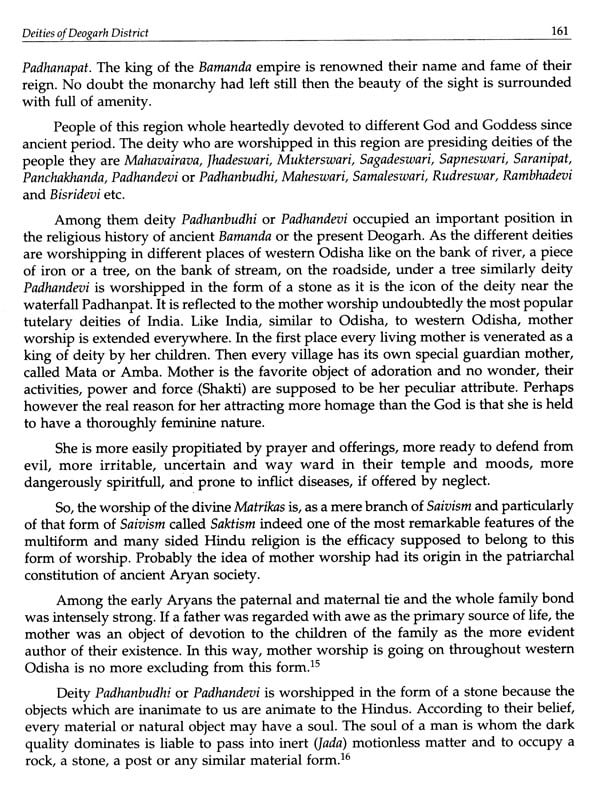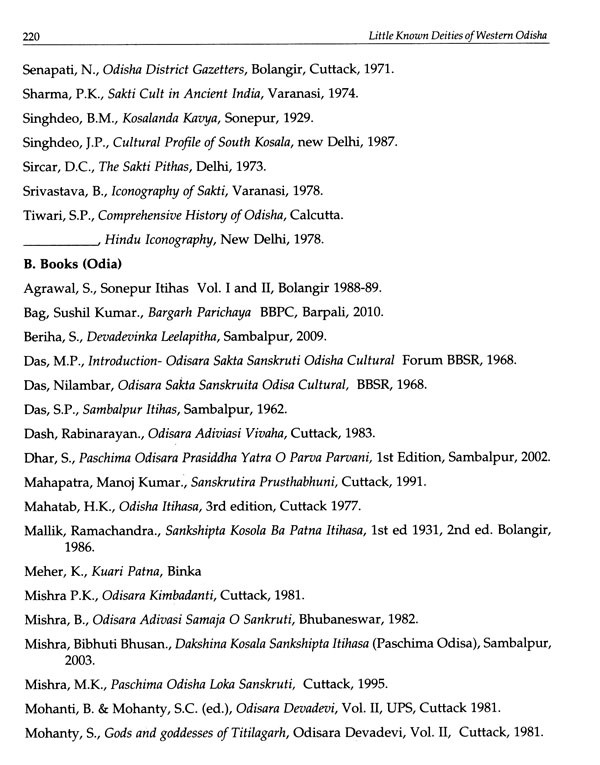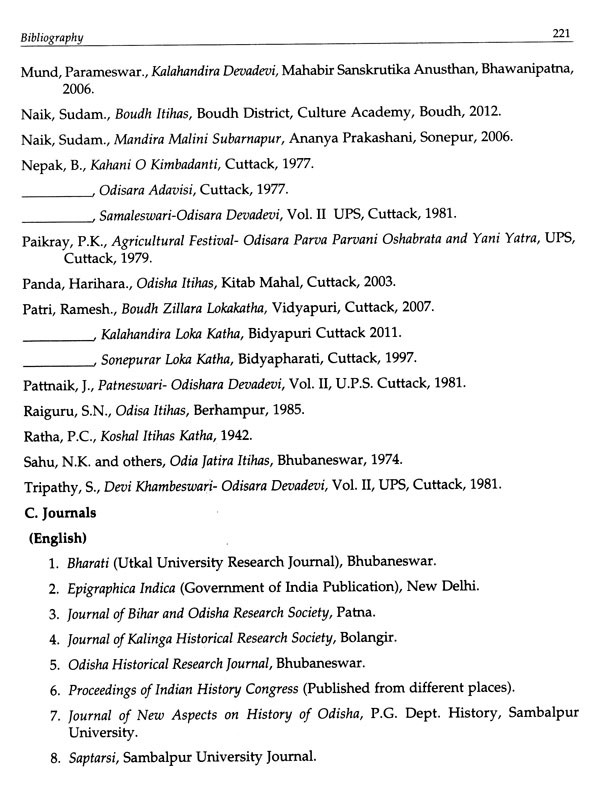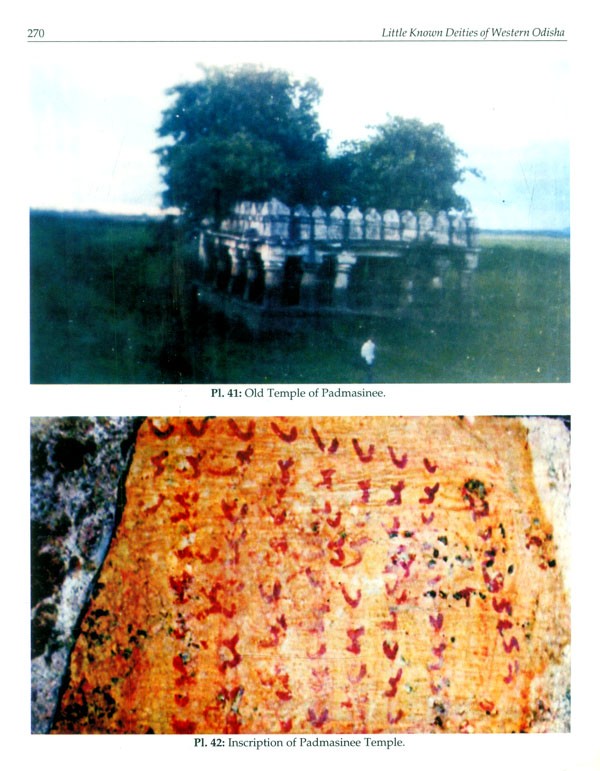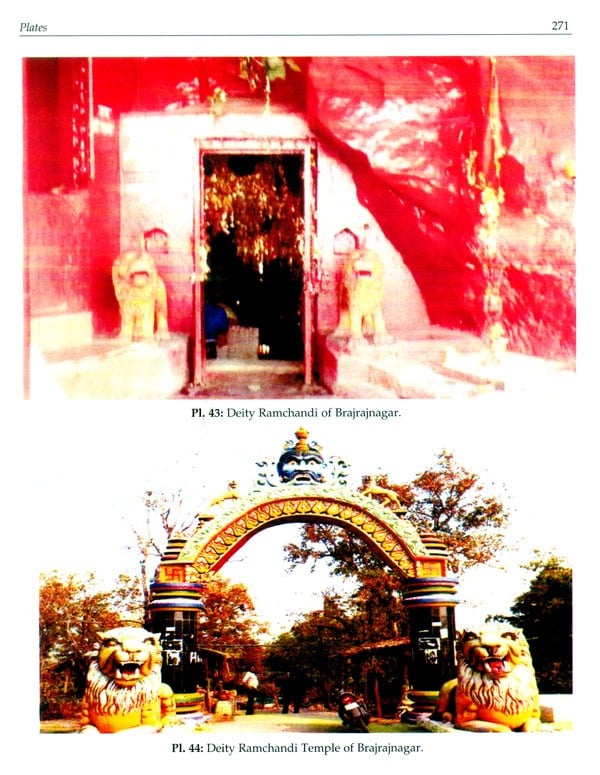
Little Known Deities of Western Odisha
Book Specification
| Item Code: | UAQ100 |
| Author: | Dhananjaya Seth |
| Publisher: | B.R. Publishing Corporation |
| Language: | English |
| Edition: | 2022 |
| ISBN: | 9789391123086 |
| Pages: | 304 (Throughout Color Illustrations) |
| Cover: | HARDCOVER |
| Other Details | 11.00 X 9.00 inch |
| Weight | 1.05 kg |
Book Description
Ruled by different Royal dynasties in western Odisha, people were embraced various religious faith & belief like Buddhism, Brahmanism, Jainism, Saivism, Shaktism and worshipped tribal deities which are seen today. Shakti cult is noticed by its symbolic representation in the form of bisected triangles resembling female genital engraved and painted on the wall of Mesolithic, Neolithic and Chalcolithic age of rock in shape of picture are discovered in the region in the rock shelters of Ushakothi, Bikramkhol and Lekhamuda. In the ancient time, mother goddess was the most form of worship, is found as a prominent feature in this faith and belief of the people of this land. Gods and goddesses were known to have flourished as village or Taluk deities without iconic presentation. Goddess Stambesuari or Khambesauri is made of log of wood worshipped as folk deity was the most popular in western Odisha in ancient and medieval period. The tutelary deity of the Chauhans, Asapuri Devi was worshipped popularly in various forms of goddess Durga and mother goddesses like Patneswari, Samaleswari, Manikeswari, Sureswari, Lankeswari etc. However, the worship of Samaleswari appears to have been the most popular local deity during the reign of the Chauhans The religious life and faith of the people are the legacies of Western Odisha very much present in the cultural heritage. The little known deities of the western Odisha assume a distinct position in the history of Odisha. In the ancient and medieval period, western Odisha have been the meeting ground of various little known deities.
Modern Odisha, the land of Odia speaking people stands on the edge of Bay of Bengal. It extends from 17° 49 N to 220 34" N latitude and from 81° 27 to 870 29 E longitude. It is demarcated by the Bay of Bengal on the east, Bengal and Jharkhand in the North east Madhya Pradesh on the west and Andhra Pradesh on the south. This Geographical configuration of Odisha is the creation of the recent past and it came into being with the formation of a separate Province on the linguistic basis on the 1" April 1936. A.D. The present Odisha has been divided in to 30 Districts.
Western Odisha broadly denotes today the geographical area covered by the Jurisdiction of the districts of Kalahandi, Nuapara, Bolangir, Sonepur, Boudh, Sambalpur, Bargarh, Jharsuguda, Deogarh and Sundergarh. The undivided four District (Bolangir, Kalahandi, Sambalpur and Sundergarh) territory was a part and parcel of Dakshina Kosala or South Kosala.
Kosala was as important Mahajanapada of Northern India and it continued as a single unit' at least up to the rise of Mauryas. Pargiter believes that, Rama's long stay in the region gave rise to this term, while Dr. D.C Sircar asserts the Kosala was colonised by the Iksvaku Princess of Ayodhya, By that time of poet Kalidasa, South Kosala had been already known as a distinct political unit, for in the Raghuvamsa he seems to suggest that Kusavati the capital of Kusha, was located on the Vindhya ranges.
**Contents and Sample Pages**
